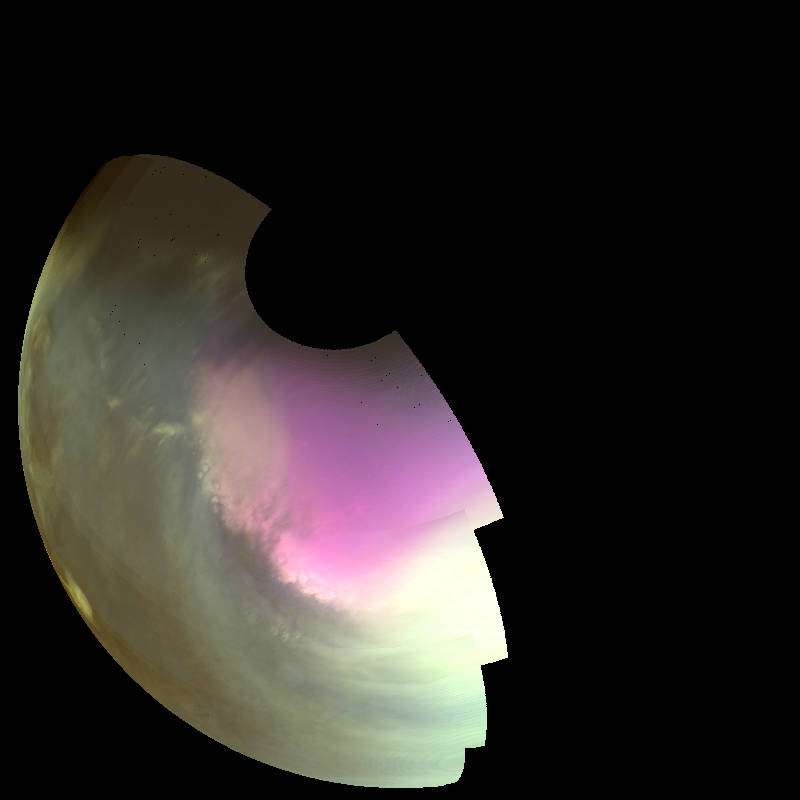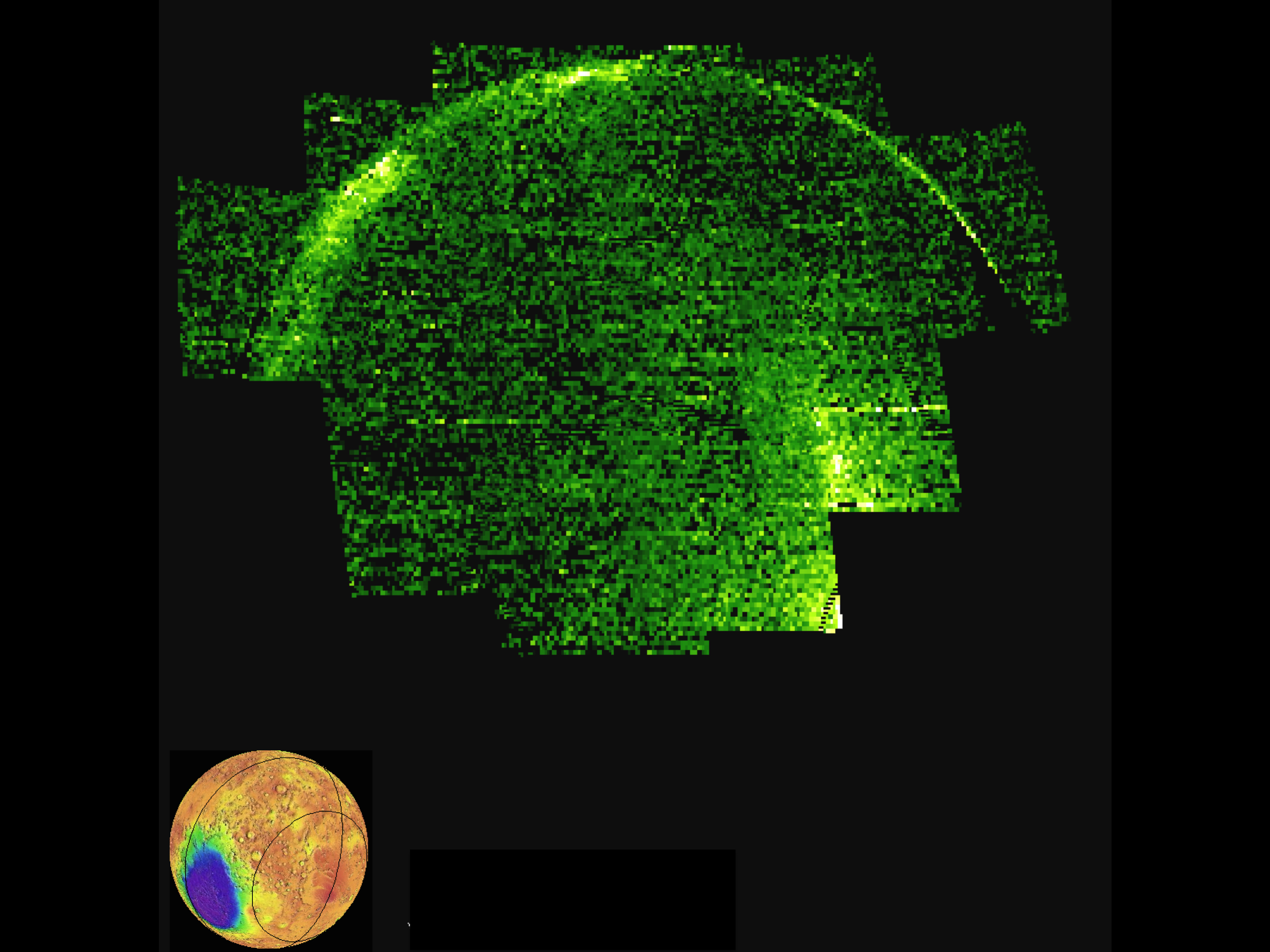Gorgeous Mars 'Nightglow' Spotted by NASA Orbiter (Photos, Video)
The first detailed look at Martian "nightglow" has been revealed, thanks to the work of NASA's newest Red Planet orbiter.
The space agency's Mars Atmosphere and Volatile Evolution (MAVEN) probe took global pictures of the Red Planet in ultraviolet (UV) light, revealing how winds flow at high altitudes. You can see a video of the UV nightglow on Mars here.
"Nightglow" refers to a phenomenon in which a planet's sky faintly glows, even without external light. On Mars, this is the result of nitric-oxide emissions. [Photos: NASA's MAVEN Mission to Mars]
These emissions are produced when UV light from the sun breaks down carbon dioxide and nitrogen molecules on the day side of Mars. High-altitude winds circulate the remaining atoms across the planet. On the Martian night side, the atoms flow down to lower altitudes, where nitrogen and oxygen atoms combine and create nitric oxide. The resulting energy the combination creates is released as UV light.
While nightglow has been detected by earlier missions, MAVEN is the first to show images of it in action.
"Splotches and streaks appearing in these images occur where [nitrogen oxide] recombination is enhanced by winds. Such concentrations are clear evidence of strong irregularities in Mars' high-altitude winds and circulation patterns," NASA officials said in a statement.
"These winds control how Mars' atmosphere responds to its very strong seasonal cycles," they added. "These first images will lead to an improved determination of the circulation patterns that control the behavior of the atmosphere from approximately 37 to 62 miles (about 60 to 100 kilometers) high."
Breaking space news, the latest updates on rocket launches, skywatching events and more!
Besides showing nightglow, MAVEN's new UV images reveal how ozone changes seasonally, and that clouds are formed over huge Martian volcanoes, mission team members said.
Daylight images of the Martian south pole were obtained, showing that ozone persists longer in the southern hemisphere than previously believed. While ozone breaks down when water vapor is introduced, the global winds of Mars keep the water vapor away well into the spring.
MAVEN's images of clouds over four Martian volcanoes are some of the best a mission has taken, NASA officials added. Monitoring clouds helps scientists understand how a planet regulates its energy and water vapor over each day and season.
These results will be presented tomorrow (Oct. 19) at the American Astronomical Society Division for Planetary Sciences meeting in Pasadena, California, by Nick Schneider, an associate professor at the Laboratory for Atmospheric and Space Physics at the University of Colorado.
Follow Elizabeth Howell @howellspace, or Space.com @Spacedotcom. We're also on Facebook and Google+. Original article on Space.com .

Elizabeth Howell (she/her), Ph.D., was a staff writer in the spaceflight channel between 2022 and 2024 specializing in Canadian space news. She was contributing writer for Space.com for 10 years from 2012 to 2024. Elizabeth's reporting includes multiple exclusives with the White House, leading world coverage about a lost-and-found space tomato on the International Space Station, witnessing five human spaceflight launches on two continents, flying parabolic, working inside a spacesuit, and participating in a simulated Mars mission. Her latest book, "Why Am I Taller?" (ECW Press, 2022) is co-written with astronaut Dave Williams.



